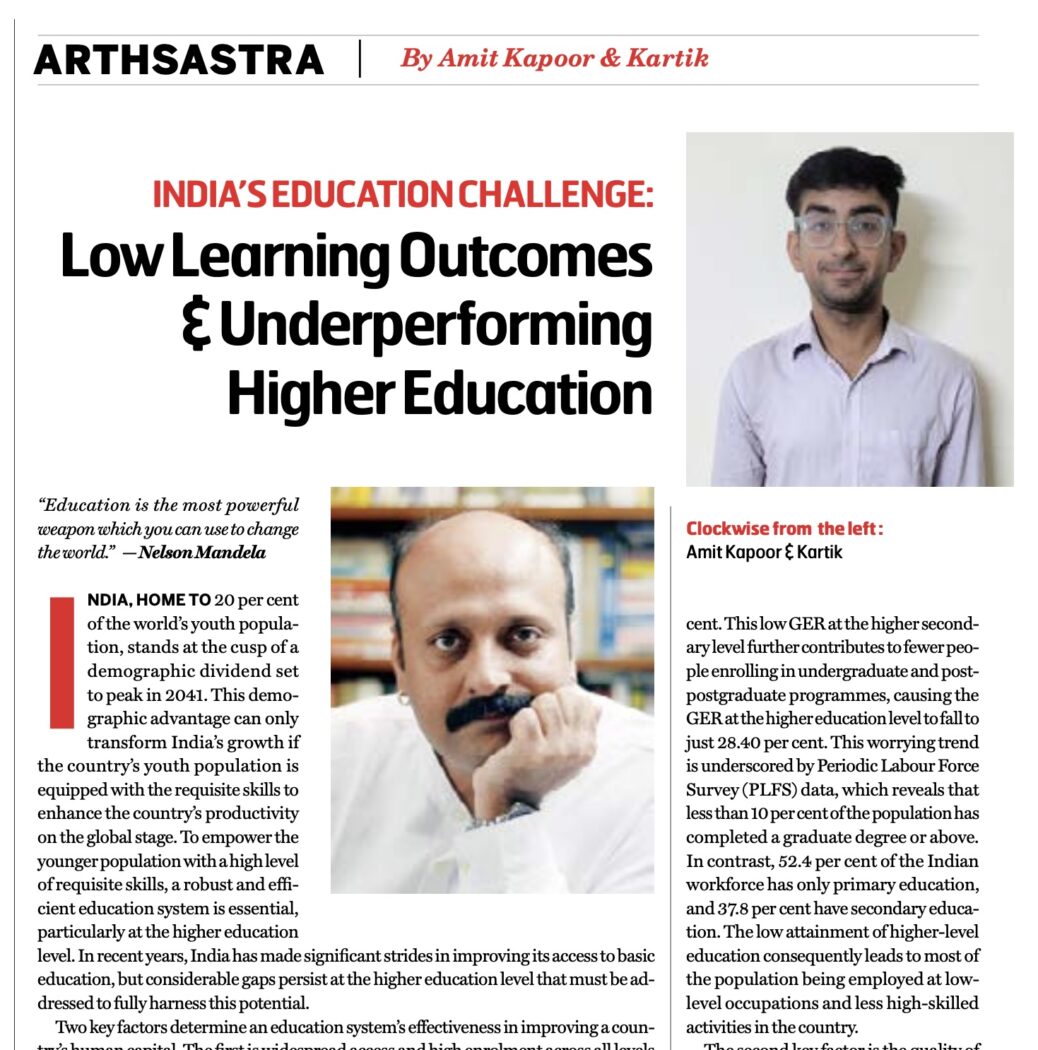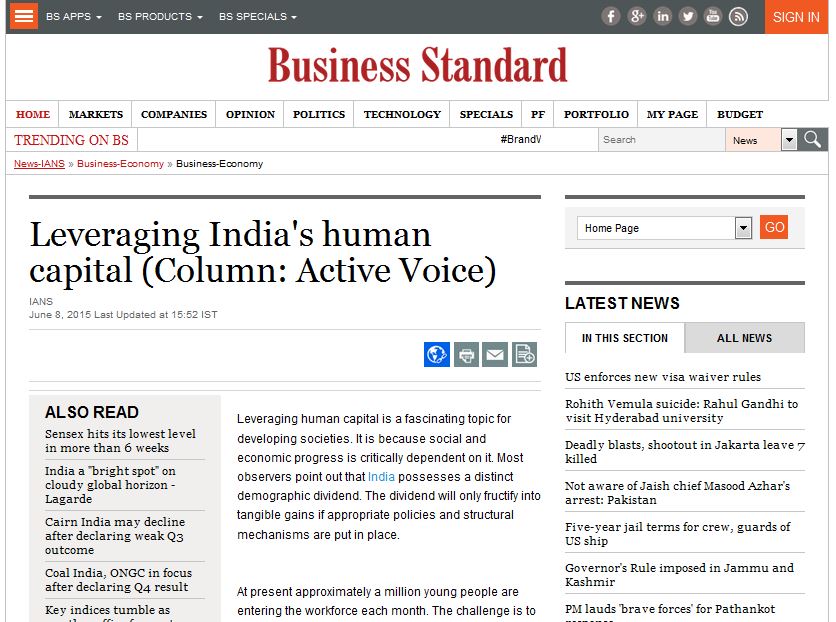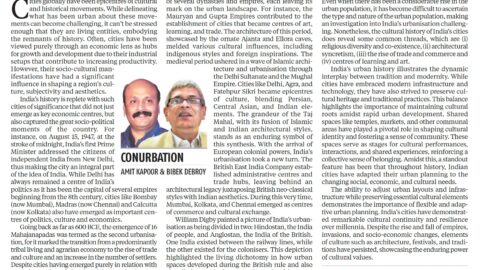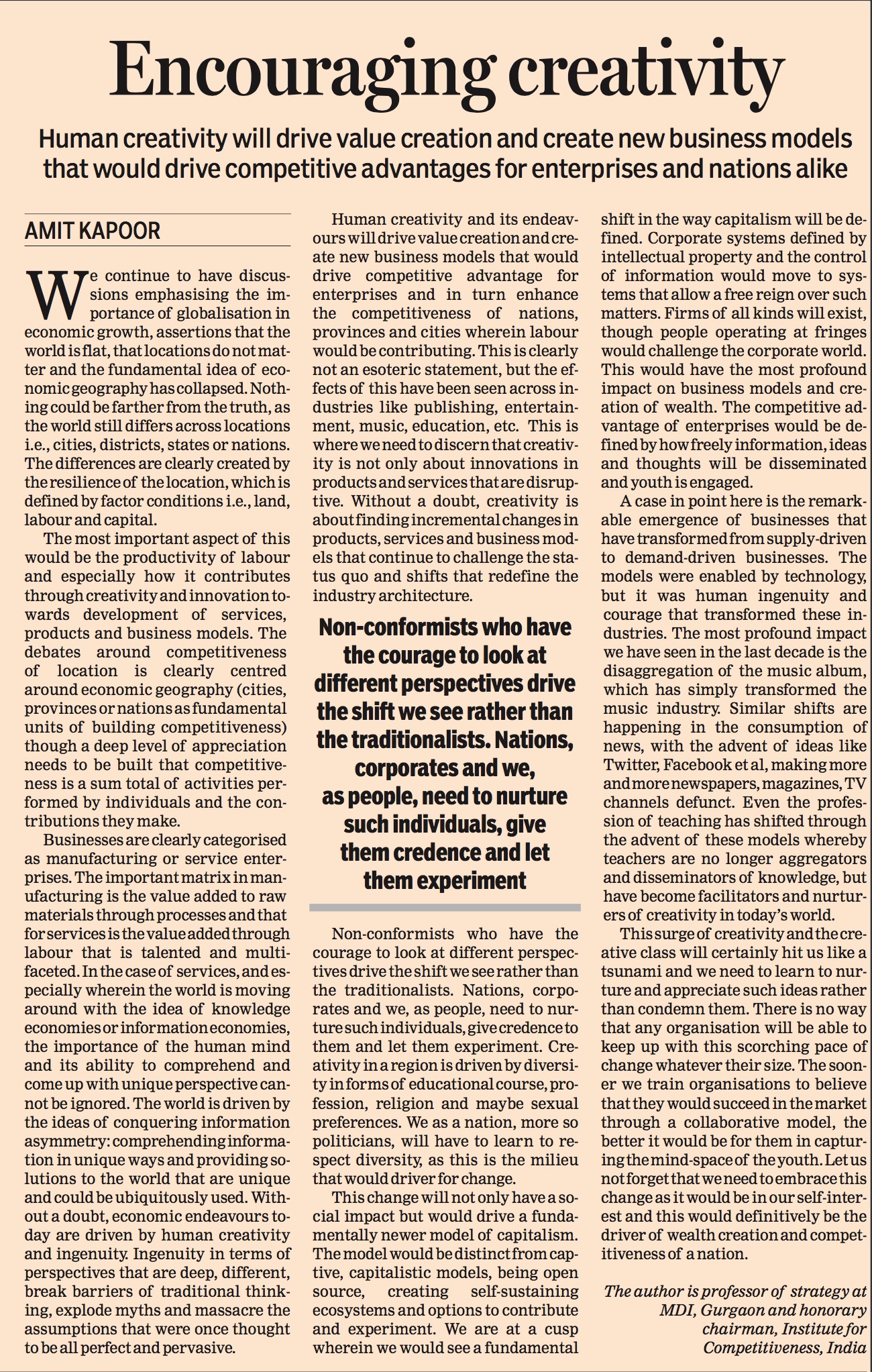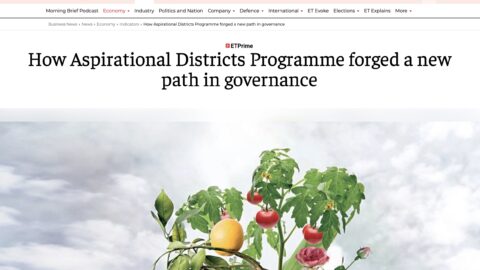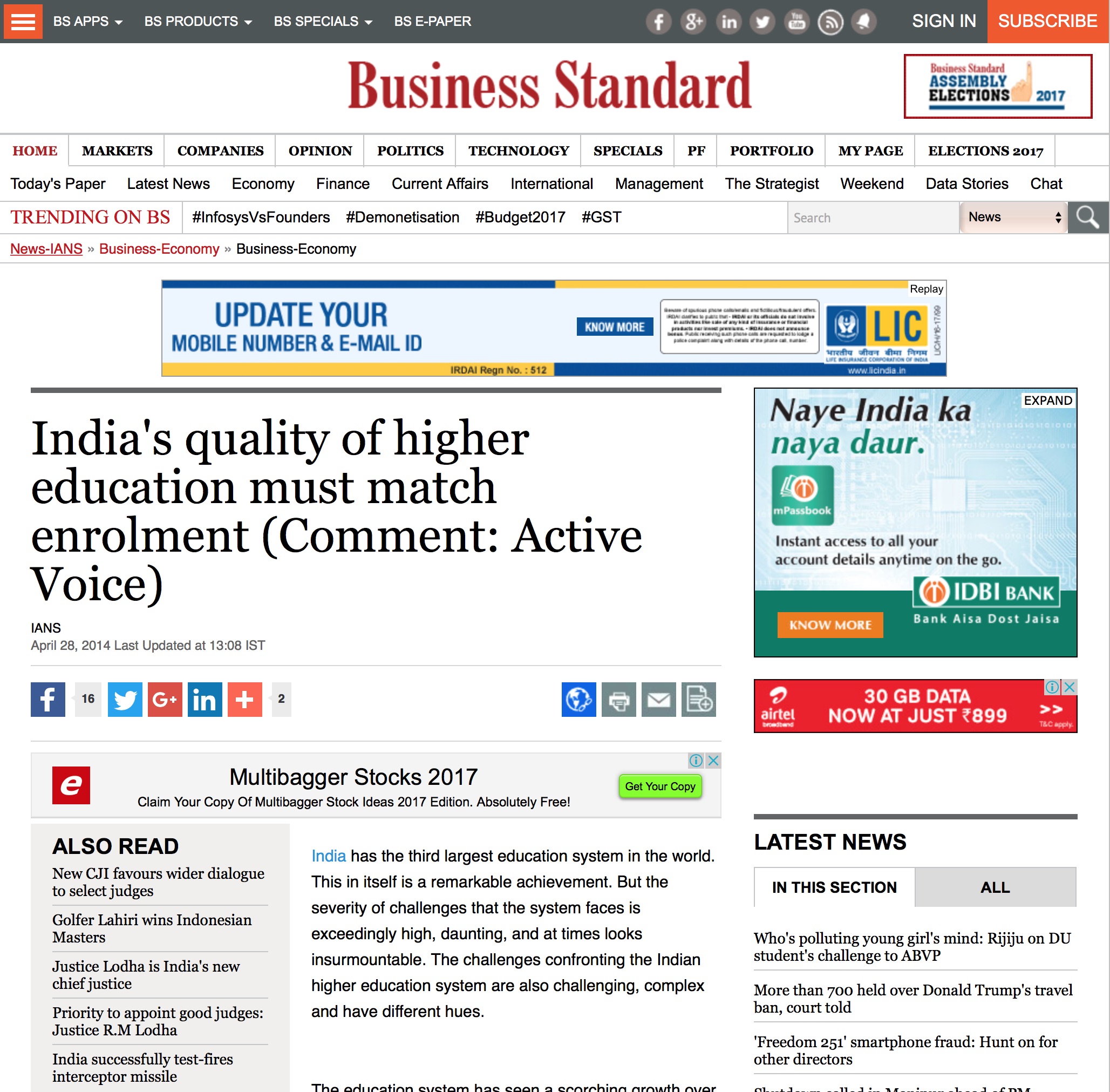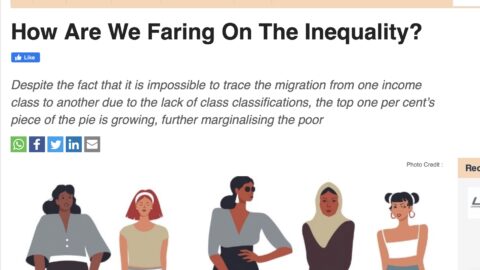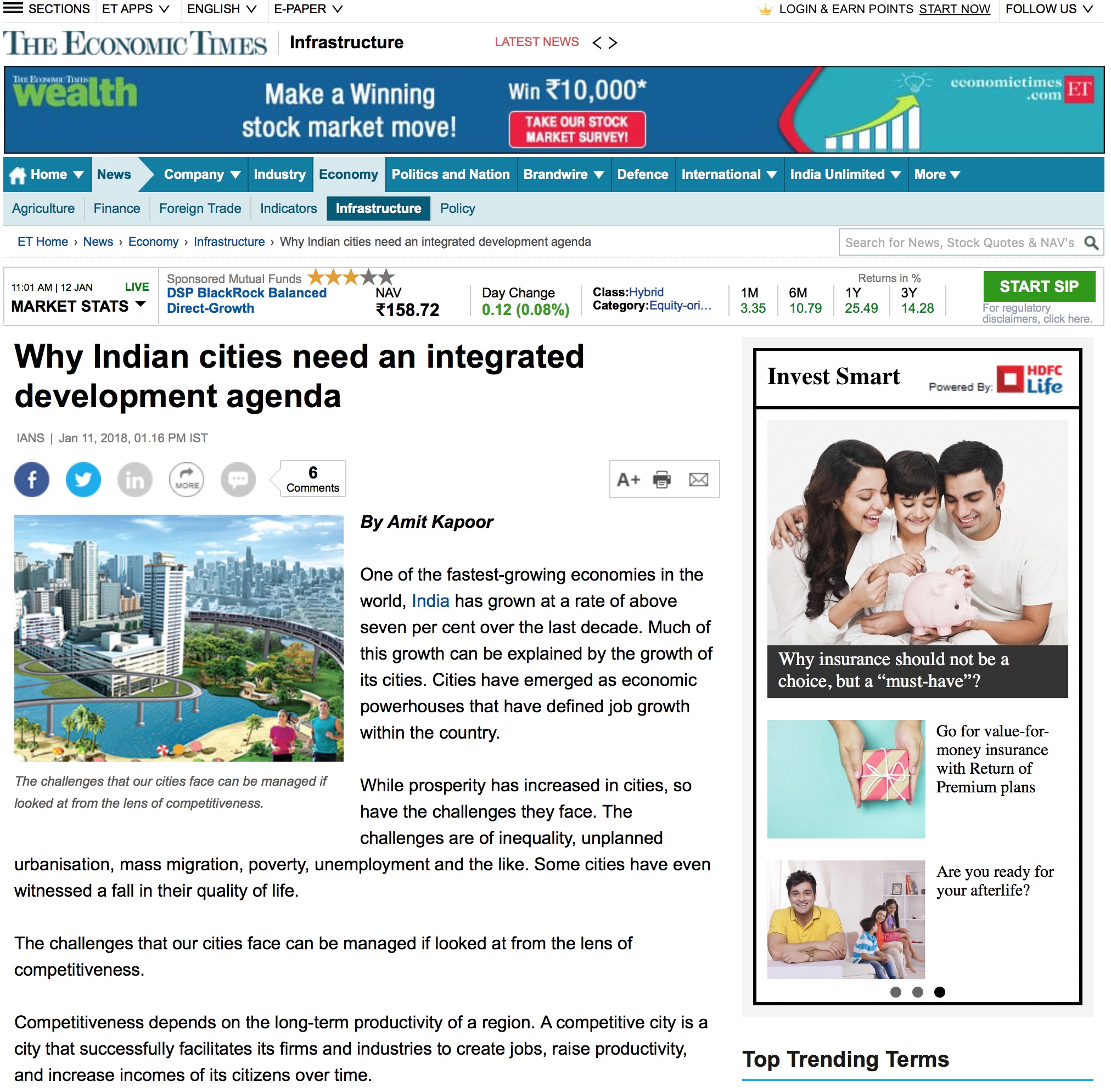By Amit Kapoor and Kartik
India’s Education Challenge: Low Learning Outcomes and Underperforming Higher Education
“Education is the most powerful weapon which you can use to change the world.” – Nelson Mandela
India, home to 20% of the world’s youth population, stands at the cusp of a demographic dividend set to peak in 2041. This demographic advantage can only transform India’s growth if the country’s youth population is equipped with the requisite skills to enhance the country’s productivity on the global stage. To empower the younger population with a high level of requisite skills, a robust and efficient education system is essential, particularly at the higher education level. In recent years, India has made significant strides in improving its access to basic education, but considerable gaps persist at the higher education level that must be addressed to fully harness this potential.
Two key factors determine an education system’s effectiveness in improving a country’s human capital. The first is widespread access and high enrolment across all levels of education, from primary school to tertiary institutions. The second crucial factor is the quality of education, which is measured by the level of learning outcomes for the country’s students.
Regarding the first factor of Access to Education, at the Primary and Upper Primary levels, India has been able to bring the majority of the students under the formal education system, with the Gross Enrolment Ratio (GER) reaching 100.13% at the Elementary level, i.e. Class 1 to 8th, an improvement from 97.4% in the year 2011-12. The transition rate to the secondary level stood at 88.81% in 2021-22, resulting in a GER of 79.56% at the Secondary level of Education, i.e. Class IX-X. However, enrolment steadily declines as students progress to higher levels of education.
Only 78.41% of the children transition from Secondary to Higher Secondary Education, resulting in a GER at the higher secondary level dropping to a mere 57.76%. This low GER at the higher secondary level further contributes to fewer people enrolling in undergraduate and post-postgraduate programmes, causing the GER at the higher education level to fall to just 28.40%. This worrying trend is underscored by PLFS data, which reveals that less than 10% of the population has completed a graduate degree or above. In contrast, 52.4% of the Indian workforce has only primary education, and 37.8% have secondary education. The low attainment of higher-level education consequently leads to most of the population being employed at low-level occupations and less high-skilled activities in the country.
The second key factor is the quality of learning outcomes, representing one of the most significant challenges facing the Indian education system. This challenge is particularly pronounced at the school education level, as evidenced by findings from the National Assessment Survey (NAS). The findings of the National Assessment Survey conducted for children studying in Class 3, 5, 8 and 10 highlight the lack of basic foundational skills of numeracy and proficiency among Indian students. In the assessments conducted as part of the survey, the students attempt tests based on various subjects and are awarded scores out of 500 for each subject. At the Class 3 level, Indian students, on average, scored 323 and 306 in Language and Mathematics, respectively. However, as the classes progressed, a decline in the average score of students in both subjects was observed. Class 5 students scored 309 in language, falling to 302 in Class 8 and 277 in Class 10th. In Mathematical proficiency, class 5th students scored 284 marks, falling further to 255 in Class 8th and ultimately reaching 220 in Class 10th, i.e. less than 50% of the maximum. This lack of a strong foundational education creates a growing deficit in essential skills as students progress through the grades, becoming particularly pronounced at the higher education level.
The trend of poor outcomes evident in school education continues into higher education, reflected in low graduation rates among degree-seeking students. According to the All India Survey for Higher Education (AISHE), only 23.4% of students enrolled at the undergraduate level in the country complete their degrees. However, the decline of out-turn rate from 32.71% in 2011-12, a drop of almost 9 percentage points in over a decade, presents an even more concerning picture. At the discipline level, Out-turn rates in Medical Sciences have halved, dropping from 35.29% to 17.20%. Among the undergraduate degrees, out-turn of the science courses declined by 7 percentage points, whereas arts saw a greater decline by 13 percentage points. The worst fall was witnessed by Medical Sciences where out-turn rates have halved, dropping from 35.29% to 17.20%. The steepest fall in rate was witnessed in the Education sector, with the passing rate falling from 75.47% in 11-12 to a mere 40.30% in 21-22. At the postgraduate level, the pass rate among the courses at PhD level also dropped significantly from 26.78% to 15.34% in a decade. These low outturn rates significantly contribute to the low number of highly skilled workers entering the workforce, suggesting a need to improve higher education’s capacity to produce graduates with the necessary expertise. This scarcity of highly skilled individuals consequently limits the workforce’s ability to perform complex, high-skilled activities crucial for innovation and economic growth.
India has made significant strides in expanding access to education for every potential student. At the primary education level, initiatives such as Midday Meal, National Education Policy, Sarva Shiksha Abhiyan, the Right to Education Act, 2009 and the most recent National Initiative for Proficiency in Reading with Understanding and Numeracy (NIPUN Bharat) played a crucial role in enrolling students into the formal school education system. At the higher education level, the growing number of educational institutions further reiterates the increased accessibility to all levels of education in the country. However, the persistent low learning outcomes at the school level and the low transition rates to higher education significantly impede India’s progress towards realizing its full potential. At this pivotal moment, as India undergoes structural transformation toward highly sophisticated industries, immediate action is essential to foster high-level skills across the majority of its population.
The article was published with Business World on January 16, 2025.

